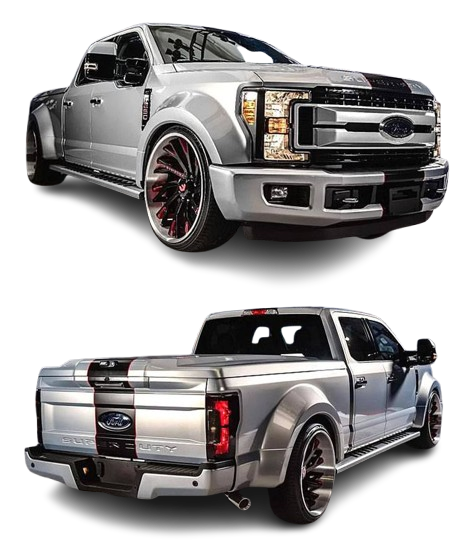Technology is revolutionizing the automotive industry, significantly impacting the design, manufacturing, and functionality of modern auto parts. This guide explores how technology enhances automotive components, improving performance, safety, and efficiency.
1. Advanced Materials
Lightweight Composites
The use of advanced materials like carbon fiber and aluminum is transforming vehicle design. These lightweight composites reduce overall vehicle weight, which in turn:
- Improves Fuel Efficiency: Lighter vehicles require less energy to operate, leading to better fuel economy.
- Enhances Performance: Reduced weight allows for improved acceleration and handling, contributing to a more dynamic driving experience.
As manufacturers continue to innovate, the adoption of these materials is becoming increasingly common.
Durability Enhancements
New materials are also engineered for greater strength and resistance to wear. Advances in material science have led to components that can withstand harsher conditions and stresses, extending the lifespan of critical parts. For instance, high-performance brake pads made from advanced composites can resist fading during intense use, ensuring consistent performance.
2. Smart Sensors and Diagnostics
Real-Time Monitoring
Modern vehicles are equipped with smart sensors that monitor various systems, providing real-time data on performance and potential issues. These sensors track everything from engine performance to tire pressure, alerting drivers to anomalies that could indicate a problem.
Real-time monitoring contributes to:
- Enhanced Safety: Immediate alerts can prevent accidents caused by mechanical failures.
- Informed Driving Decisions: Drivers can make proactive decisions based on accurate data, improving overall vehicle management.
Predictive Maintenance
Technology enables predictive maintenance by analyzing sensor data to anticipate failures before they occur. This proactive approach reduces downtime and repair costs, as it allows for timely interventions. For example, if a sensor detects unusual wear in the brake system, a warning will prompt the driver to address the issue before it leads to failure.
Predictive maintenance not only saves money but also enhances safety and reliability.
3. Integration with Electronics
ECUs (Electronic Control Units)
Modern vehicles rely on multiple Electronic Control Units (ECUs) to manage various aspects of the vehicle, from engine performance to infotainment systems. This integration enhances overall functionality and efficiency, allowing for:
- Improved Performance: ECUs optimize engine parameters for better fuel efficiency and power output.
- Seamless Operation: Systems like navigation, entertainment, and climate control work together more effectively, enhancing the driving experience.
Smart Features
Advanced technology enables smart features that enhance driver safety and convenience. Innovations such as:
- Adaptive Cruise Control: Automatically adjusts the vehicle’s speed to maintain a safe distance from other cars.
- Lane-Keeping Assist: Helps prevent unintentional lane departures by providing steering assistance.
- Automated Braking: Engages the brakes if a collision is imminent, helping to prevent accidents.
These features rely on sophisticated algorithms and sensors to function effectively, making vehicles safer and easier to drive.
4. 3D Printing in Manufacturing
Rapid Prototyping
3D printing is revolutionizing the manufacturing process in the automotive industry by enabling rapid prototyping of parts. This technology allows manufacturers to quickly create and test prototypes, significantly reducing development time and costs. Key benefits include:
- Faster Iteration: Design changes can be implemented swiftly, allowing for more efficient testing and refinement of components.
- Cost Efficiency: Reducing the time spent on prototyping translates to lower costs, enabling manufacturers to allocate resources more effectively.
Customization
3D printing also enables manufacturers to create customized components tailored to specific vehicle models or customer preferences. This level of customization offers several advantages:
- Unique Designs: Manufacturers can produce parts with intricate designs that traditional methods can’t achieve.
- Personalized Features: Customers can request modifications that suit their individual needs, enhancing the overall driving experience.
5. Sustainability and Eco-Friendliness
Green Manufacturing Processes
Technology is driving sustainable practices in automotive manufacturing, focusing on reducing waste and energy consumption. Key initiatives include:
- Efficient Production Techniques: Advanced machinery and processes minimize material waste and optimize energy use during manufacturing.
- Lifecycle Assessment: Manufacturers are increasingly adopting lifecycle assessments to evaluate the environmental impact of their products, from production to disposal.
Recyclable Materials
Advances in material science are paving the way for the development of recyclable auto parts. This innovation contributes to a more sustainable automotive industry by:
- Reducing Environmental Impact: Using recyclable materials minimizes landfill waste and conserves natural resources.
- Encouraging Circular Economy: Manufacturers can reclaim and reuse materials from old parts, promoting a circular economy within the automotive sector.






One comment
[…] a steady speed is another essential aspect of responsible driving. Not only does this improve fuel efficiency, but […]